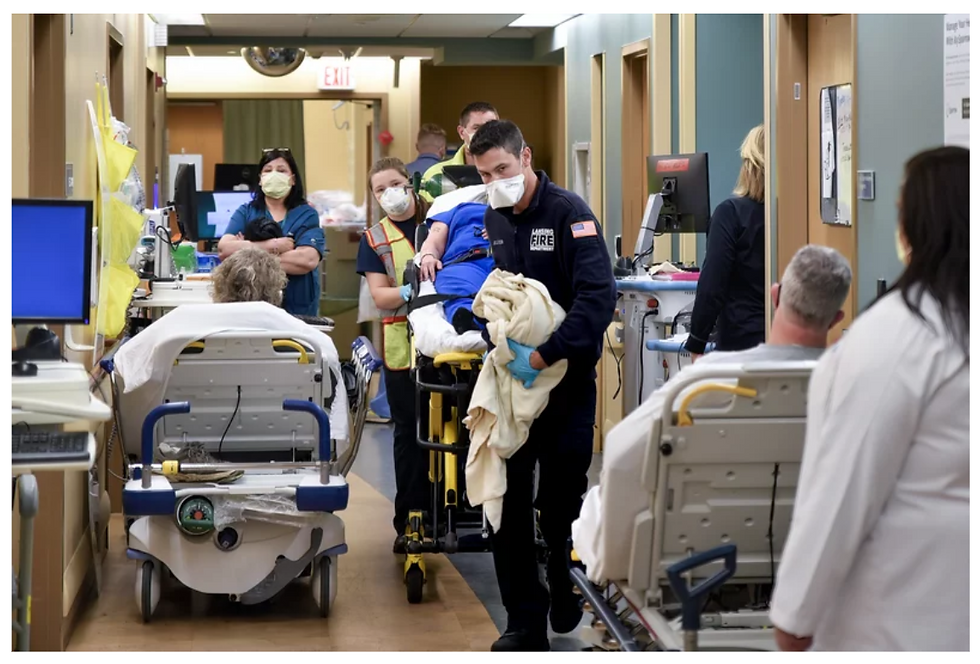Tackling Formularies
- katherinepiette
- Mar 30, 2021
- 3 min read
Written by Alicia Jenkins, BSN, RN, CWCN

Just like a good left tackle protects the quarterback, a tight and solid supply formulary will protect your bottom line and help lead your team to victory. There is no doubt about it though, getting there can feel like you’re spending more time in the dirt than gaining any yardage. Don’t give up! It is worth the effort and can be broken down into a few simple steps.
Let’s discuss specifically the Advanced Wound Care aspect of your formulary review for home health and hospice.
Start with evaluating your current business practice. This will take some time.
Go long! Obtain your supply usage data for the last 6 months or a year to review. There are several aspects to look for in the data:
Manufacturer expenditures. Review per category, per item, top 10 expenditures, top off-formulary ordered items, etc.
Patient expenditures. Look at last month’s data by patient, nurse, item, etc.
Begin looking for opportunities! If revising the entire formulary, break into categories of wound care, urologicals, ostomy, incontinence, nursing, etc.
Develop control parameters. Consider account triggers to assist with managing costs.
Orders over $100
More than 1 order a week
Off formulary items, etc.
Refine Trunk Stock inventory. Target improvements for SOC provision of wound care, efficiencies, and waste.
Manage order process. How are you currently ordering, what is working well and what isn’t? Do you have a formulary in place, or does your staff have to go shopping and figure out what they’re looking for and search for what is available in a local warehouse, or on backorder, etc.? Is there duplication of products?
Make workflow adjustments. What is your patient-level supply order process, and how do you ensure compliance?
Measure outcomes. What measures will you target? How are you capturing the data?
Evaluate system-level requirements. Are you a part of a hospital-based system, or do you work closely with a physician group where you need to reflect the continuity of care? Are they willing to work with you or be flexible as needed on brand specificity versus generically worded orders?
Be clear in your goals.
Understand the features of each product. Consider products based on usage, function, quality, wear time, price point, need, congruence with contracts in place, etc.
Consider the recommended clinical practices with each product. Understand the visit scheduling necessary, based on the formulary item.
*Remember that the unit cost of a wound dressing doesn’t necessarily equate with total cost. If a dressing seems on the expensive side but allows for less frequent dressing changes or has superior efficacy, then it may allow for a decrease in weekly skilled nurse visits, or if it allows for improved healing times, then it assists in decreased length of service with a decrease in total visit utilization, and improved patient outcomes. A win-win for patient and agency.”
Make plans for routine re-evaluation. New products continually come to market. You will want to have a process for evaluation to determine if that product will function as a replacement or addition to your formulary. Also, be aware that prices for your current products may change with little or no warning.
Consider any tool you provide your nurses/clinicians to make their job easier is a great benefit to formulary compliance.
Finally, plan to be flexible when necessary. Wound care is not a one-size-fits-all, and there will always be the patient who is allergic to everything (or believes they are), the challenging wound patient, etc., that you will need to have room to further customize their plan of care.
Corstrata provides a valuable benefit to Home Health and Hospice companies by evaluating and assisting them to refine their product formulary. We have seen agencies realize up to 30 - 50% overall supply cost reduction after prioritizing supply management. Additionally, we can impact supply costs in a variety of ways to ensure that wound products are being used appropriately.
Product is appropriate for the type of wound
Correct frequency of application is being followed
Redundancy of products available for use is eliminated
Product use is appropriate for the goal of wound-closure vs. palliative care
A good formulary, like the left tackle in football, is not the glorified player. They are not the quarterback, but they are needed to win in decreasing supply costs and improving both financial and clinical outcomes. Go, team!




Comments